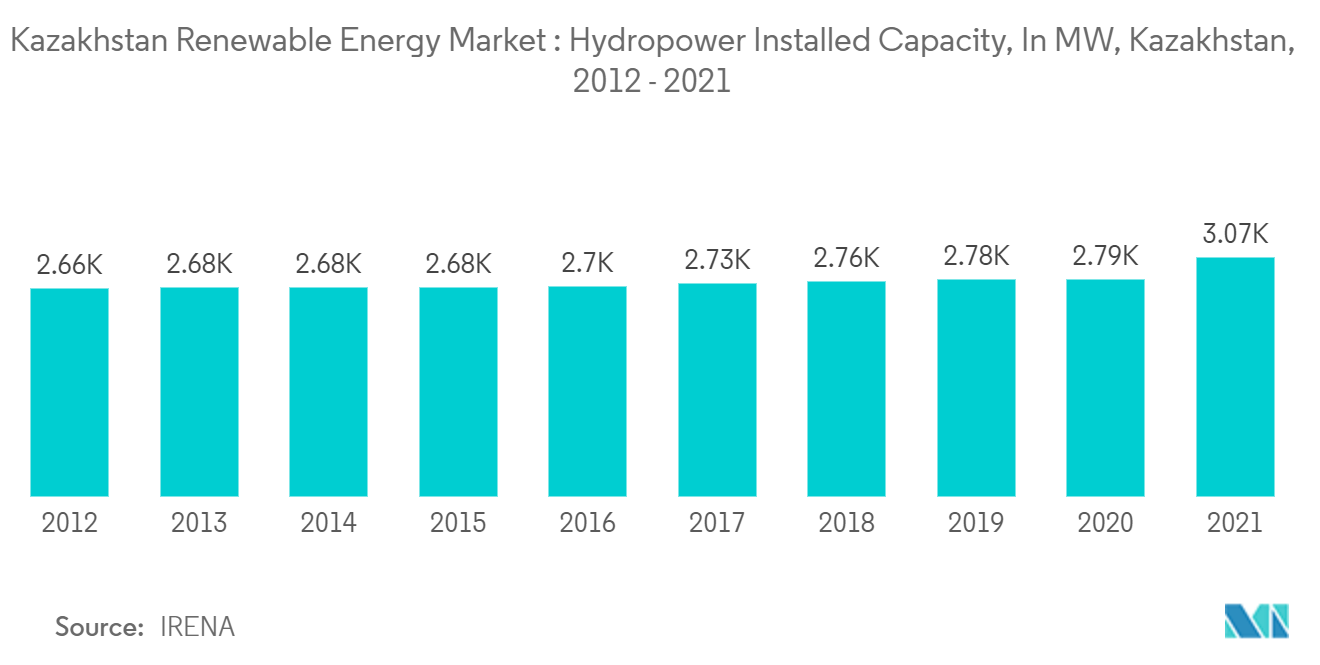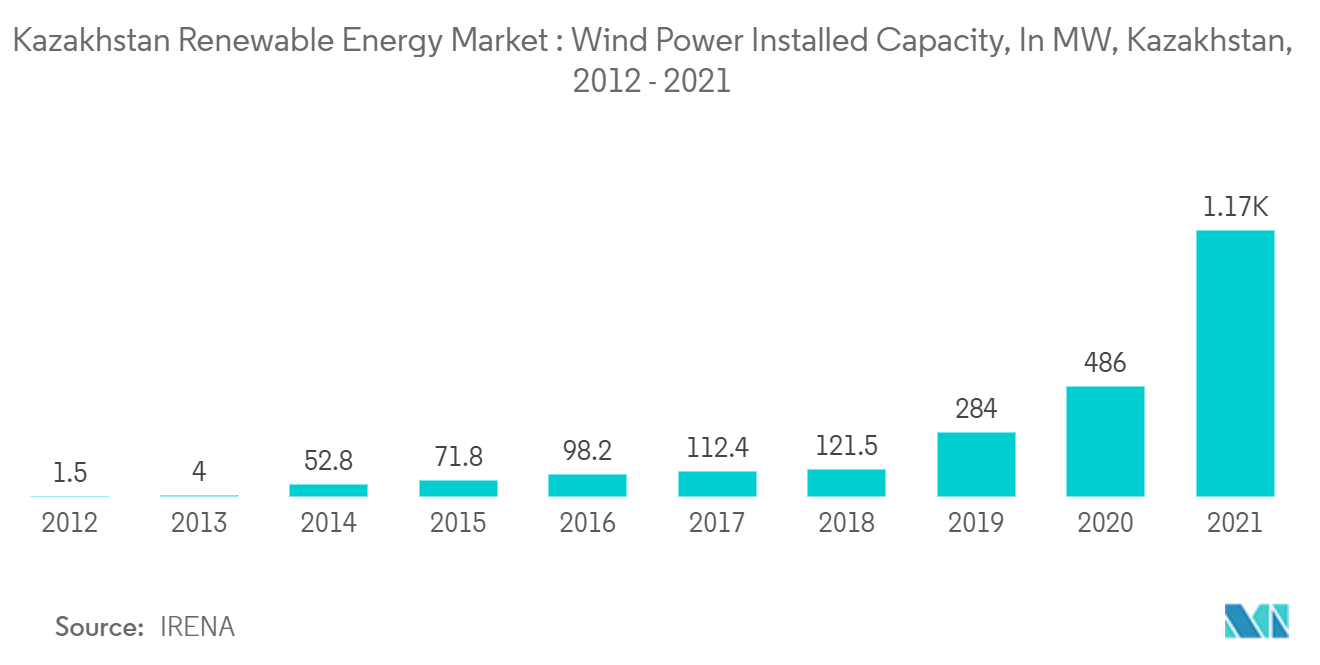Market Trends of Kazakhstan Renewable Energy Industry
This section covers the major market trends shaping the Kazakhstan Renewable Energy Market according to our research experts:
Hydropower Expected to be a Significant Segment
- Hydropower is a reliable, cost-effective, and sustainable natural energy source that requires the kinetic energy of the flowing water to generate electricity. It is one of the cleanest forms of energy source, which dominated Kazakhstan's renewable energy market in 2021, with a total installed capacity of around 3066 megawatts (MW).
- Kazakhstan produces more than 70% of its electricity from its plentiful coal resources. However, by 2050, it aims to rely on alternative sources for 50% of its energy. This change is designed to support the government's ambitious targets of achieving carbon neutrality by 2060 and reducing the nation's greenhouse gas emissions by 15% below 1990 levels by 2030.
- In order to meet the fluctuations of solar and wind output, Kazakhstan may have to invest more in a flexible capacity, such as gas-fired and hydropower facilities.
- The government targets to increase the amount of renewable energy in electricity generation to 3% by 2020, 30% by 2030, and 50% by 2050. By hosting the first-ever competitive auctions for renewable energy projects in Central Asia, where private enterprises bid to develop and operate facilities and sell electricity at a discount, the government of Kazakhstan has begun working toward achieving these objectives.
- Thus, with the supportive government policies and green energy target, hydropower is anticipated to become a major segment of the market during the forecast period.

Wind Energy to Drive the Market
- Kazakhstan's power sector relies heavily on fossil fuels, with 75% of the power plants powered by locally sourced coal. Rapid economic growth has been leading to a demand for electricity. However, the country has some constraints, with its aging generation and transmission infrastructure dating to the Soviet era. Converting the source of electricity generation from coal to renewable is expected to reduce carbon emissions and help the country meet the rising demand.
- Kazakhstan has enormous renewable energy potential, particularly from wind and hydropower plants. It has developed large-scale wind (>300 MW) and solar photovoltaic (>800 MW) capacities. Even though the nation has plans and initiatives to improve energy capacity, their implementation remains unfulfilled.
- USAID is committed to assisting the country in integrating additional renewable energy sources like wind, solar, and hydropower into its energy mix. USAID is also helping the government create laws and regulations that encourage the provision of energy at a low cost that is competitive with the current tariffs for power.
- In August 2022, the Eurasian Resources Group announced plans to spend up to USD 230 million on the construction of a sizable wind farm in Kazakhstan. The planned renewable energy facility, scheduled for commissioning in 2024, will have a maximum capacity of 155 MW.
- In 2021, Kazakhstan's wind energy capacity rose to 1,170 MW, more than double the capacity last year. Thus, with the increasing projects, capacity, and supportive government policies, wind energy is expected to grow further during the forecast period.


